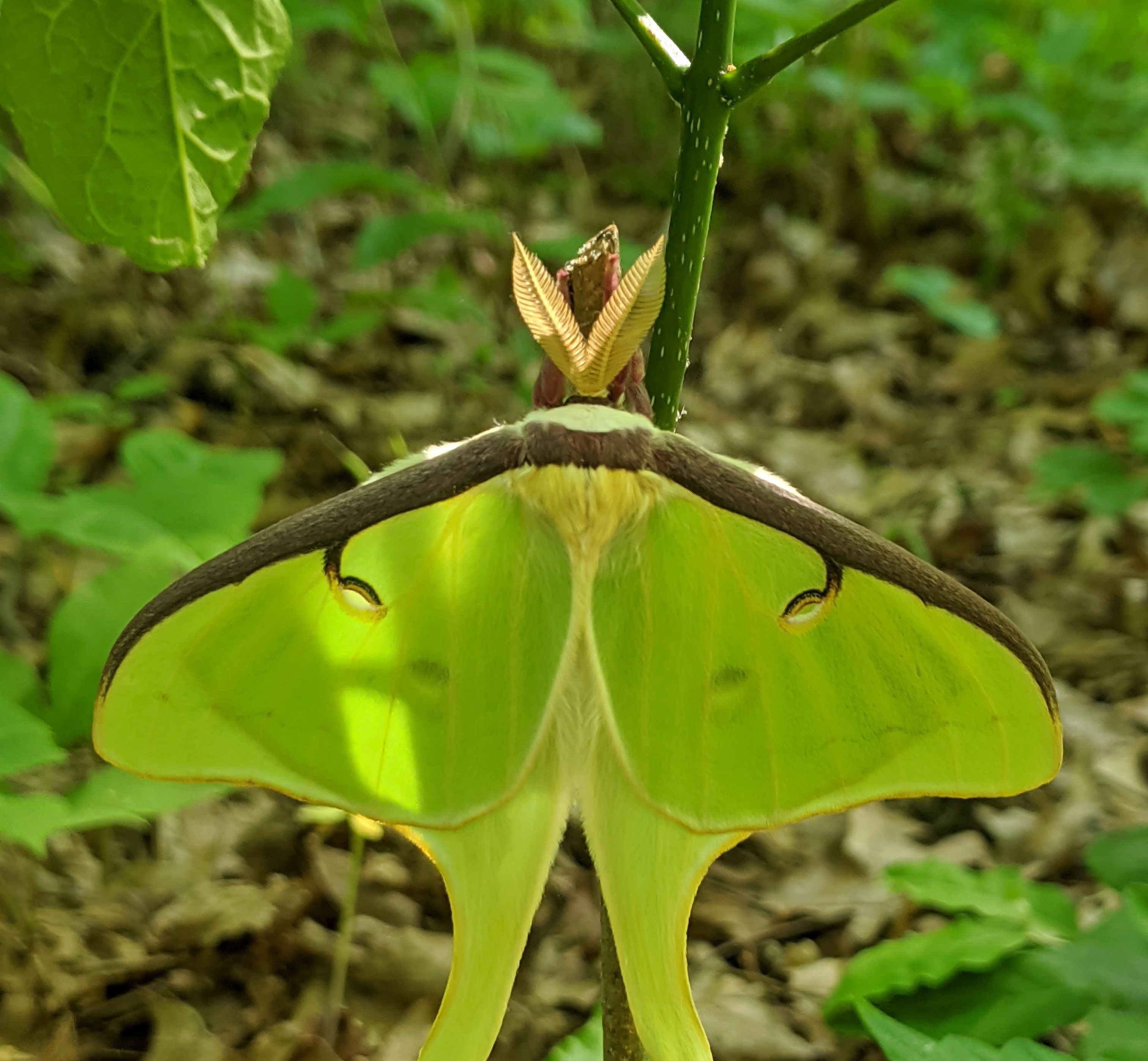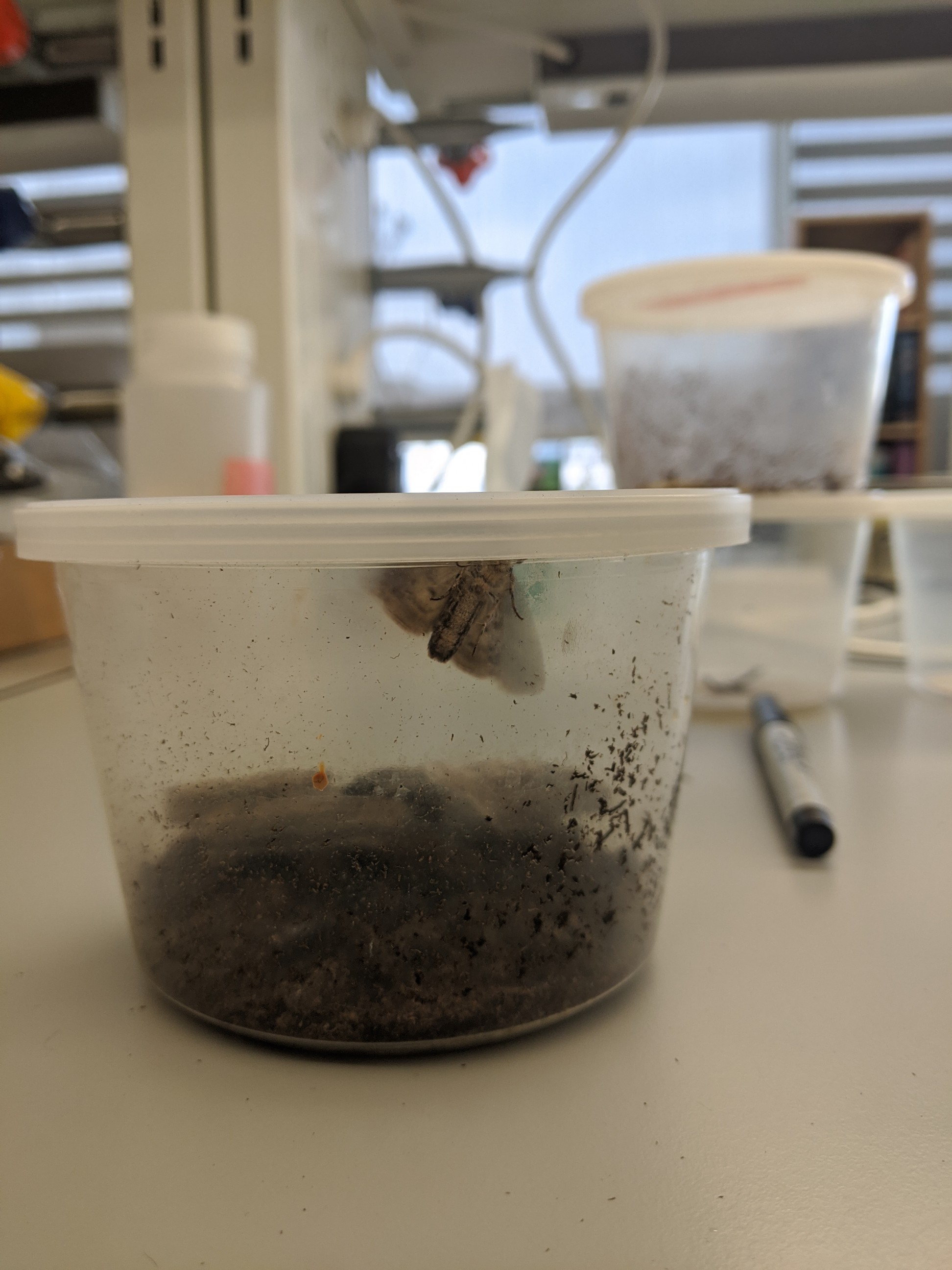Blog post #1 by Deniz Ertem
This summer, I am working in the lab of Dr. John Lill and Dr. Martha Weiss at The George Washington University and Georgetown University. The main project I am helping with involves looking at how the cicadas in Brood X, which emerged in summer 2021, affected trophic interactions in a forest ecosystem. Plants, or autotrophs, produce energy from sunlight. Herbivores eat the plants, and predators eat the herbivores, and the energy that the plants produced is in this way passed through the food web. This is an example of a trophic interaction. Usually, in non-cicada years, the birds at the field site we use (a forest in Poolesville, MD) eat caterpillars. However, when the cicadas in 2021 came along, the birds shifted their diets to eating them. Therefore, the Lill lab was predicting that, since the birds left them in peace and ate cicadas instead, there would be more caterpillars this year, along with their parasitoids. The project is also investigating how long the effect of the cicadas lasted–is bird predation on caterpillars still low? In our experiment, we are using clay caterpillars stuck to trees to measure bird predation levels. The clay, which doesn't dry out, shows beak impressions–which tell us whether birds tried preying on them. Each week, we count up how many caterpillars had beak impressions and compare the total percentage preyed on to what it was at the same time last year. The comparison helps us figure out if bird predation has risen back to the baseline levels (2020, before the cicadas came) or have changed from that baseline.
A main goal for my summer was to get experience in doing ecological research. Despite taking a field class at Columbia, I haven’t done any research in the field, and I also have no background in entomology. For this reason, I’m excited to spend the summer getting more experience in doing fieldwork and gathering data, learning about insects, and also spending some time in the lab at GWU. As a native Marylander, I’m excited to come back to the state and do research there. Studying what happens when an ecosystem is disrupted–whether by a natural phenomenon like the cicadas or by human destruction–are subjects that I’d like to do more research in. Since Brood X only emerges every 17 years, there isn’t much data about how they change trophic interactions, and I’m eager to see what we find at the end of the summer. The Lill lab will keep collecting data for this project for a few more years, and I’m so glad that I'm able to join them this summer.
Blog post #2 by Deniz Ertem
I’m on my last week of work with the Lill-Weiss lab group. While I’ve been working here, we’ve been heading out to the field at least once a week and also spending some time in the lab. In the field, we’ve been checking on the clay caterpillars I mentioned in my first post. We look to see if there are any beak marks then replace the caterpillars with a fresh batch. Since the lab did similar work last summer, we can compare predation levels in 2021 (cicada summer) to those in 2022 (no cicadas). And while we’re out in the field, we’ve been seeing gorgeous organisms like luna moths and Io moths.
My work in the lab has involved analyzing the samples from our malaise traps. A part of the project involves looking at other insect populations in the forest, not just caterpillars. Our tool for this is a malaise trap. It’s a trap which is made up of mesh where insects are channeled into a vial of alcohol and preserved there until we pick it up. We have two malaise traps set up in different parts of the forest. I’ve been looking at and pinning the beetle and butterfly species in the samples from each week, tracking the changes in the population of a few species and families. For example, I’ve been noticing that there are a ton of tiger beetles in early May, and then the numbers have been dropping in samples from the past few weeks. The lab isn’t done with the experiment yet, but I’ve really enjoyed working on it.
Blog post #3 by Deniz Ertem
In my first Research Corner post, I talked about how I was excited to do more ecological fieldwork and get experience in entomology. I am so glad I got to do both of these things! My summer research experience helped me narrow down what I’m interested in. For example, I realized that while doing fieldwork for the summer was fun and valuable, I don’t think I’d like to make a career of it or do it super regularly. Furthermore, I am very happy with my experience of learning about entomology and insects. When I first started working in the lab, I knew next to nothing about insect identification or taxonomy. Now, I can identify some of the most common orders, such as Coleoptera (beetles, with a shield like covering called the elytra over their back wings) and Hymenoptera (wasps and bees, which have two sets of meshy wings and often have long antennae). In less than three months, I made a lot of progress with IDing; in looking back at the first malaise trap samples I sorted, I saw that I’d classified many insects in the wrong order. By the time my lab work ended, I could much more easily tell which order they belonged in. I was also able to ID some insects to the species level.
I’m proud of this growth that happened, since I was coming in with almost no knowledge of any of the orders. Though I don’t think I want to focus on entomology in my future work, being familiar with insects is really, really important for an ecologist, since insects are dying rapidly due to anthropogenic factors. So as an ecologist, I’m so glad that I got a crash course in entomology this summer.
The cicada project isn’t done yet–the lab is going to be collecting data for a few more years. However, I’m really glad that I was able to participate this summer. This coming academic year, I’m going to be doing my thesis research with Dr. Naeem of Columbia’s E3B department. I’ll be doing some fieldwork in NYC looking at urban trees, and maybe I’ll be able to include insects in the project somehow. I am so happy with my summer lab experience!



